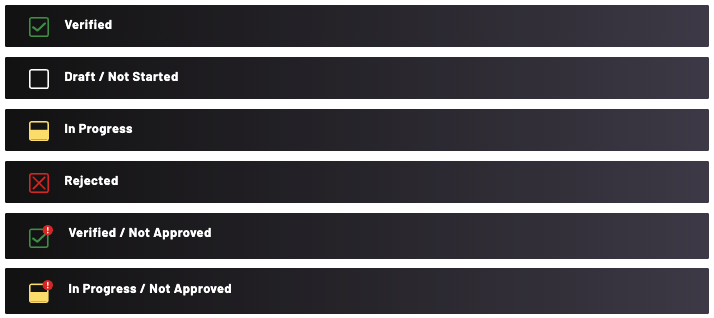Status Icons
About
Status icons exist all throughout the Verve application, whether detailing a specific item in the System Editor, representing the status of related items in the Relationships Tab, or in the Verification Matrix. These icons represent the lifecycle of an item, as computed by how it’s been reviewed and verified.
Icon States
Most item types (excluding Verification Events and Requirements) only have four states:
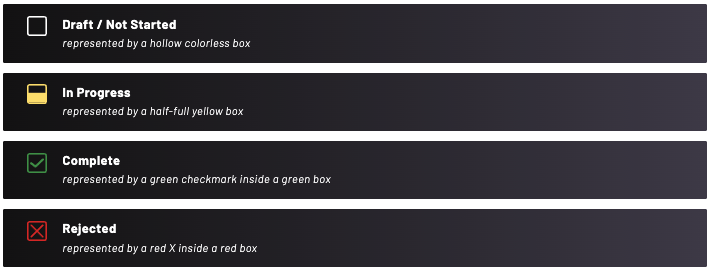
These approval states are computed entirely from the Approval status of users who have provided their approvals. We say “computed” because a mixture of an Approval status has four states, and influences the item’s status in the following ways:
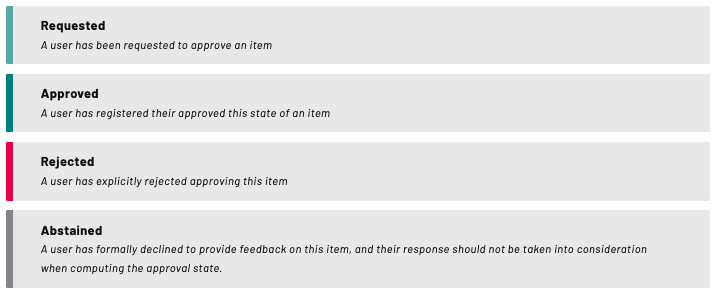
How these User Approval states impact the Item’s state is as follows:
If ANY user's approval is in the REJECTED state, then the entire Item's state is REJECTED
If ALL user's approval states are in the APPROVED, state the entire Item’s state is APPROVED
As an aside: ANY number of user approval state’s can be in the ABSTAINED state, as long as all NON-ABSTAINED user approval states are APPROVED.
If ANY user’s approval is in the REQUESTED state, and NO user’s approval state is REJECTED, then the item’s approval state is IN PROGRESS.
If an item has NO user approvals REQUESTED, then the Item’s approval state is DRAFT/NOT STARTED
Example States
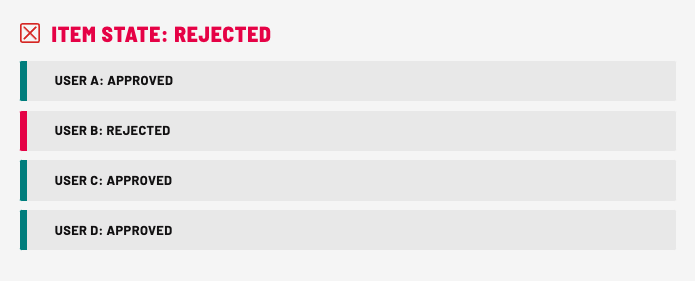
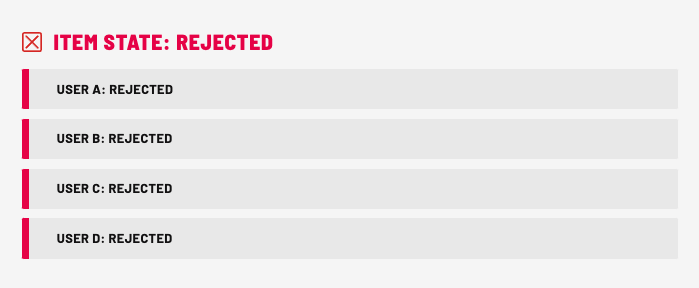



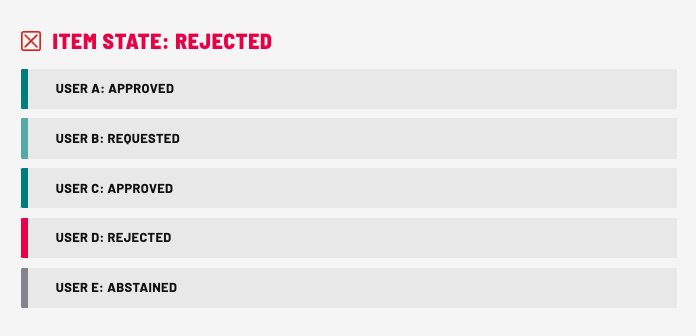

Verification Events & Requirements
Verification Events and Requirements expand this to include “at risk” Completed and In Progress states. That is, a Verification Event’s status is the product of its Approval state AND it’s Verification state. A Requirement’s status is the product of its Approval state AND its immediately downstream Verification Event’s computed state.
See the below table for how the interplay between Approval and Verification statuses interplay with a Verification Event:
Approval Status | Verification Status | Resulting Status | Icon |
|---|---|---|---|
Absent | Unverified | Not Started / Draft |  |
In Progress | In Progress (At Risk) |  | |
Verified | Completed (At Risk) |  | |
Failed | Rejected / Failed |  | |
Draft | Unverified | Not Started / Draft |  |
In Progress | In Progress (At Risk) |  | |
Verified | Completed (At Risk) |  | |
Failed | Rejected / Failed |  | |
Requested | Unverified | Not Started / Draft |  |
In Progress | In Progress (At Risk) |  | |
Verified | Completed (At Risk) |  | |
Failed | Rejected / Failed |  | |
Approved | Unverified | Not Started / Draft |  |
In Progress | In Progress (At Risk) |  | |
Verified | Completed (At Risk) |  | |
Failed | Rejected / Failed |  | |
Rejected | Unverified | Not Started / Draft |  |
In Progress | In Progress (At Risk) |  | |
Verified | Completed (At Risk) |  | |
Failed | Rejected / Failed |  |
Requirements take a more nuanced approach, and the table looks much more involved, however their actions can be summed up as:
If ANY downstream verification events have a Verification Status of FAILED OR an Approval State of REJECTED, then the entire state is REJECTED
Otherwise, if ANY downstream verification events are IN PROGRESS then the entire state is IN PROGRESS
If ALL downstream Verification Events are VERIFIED, then the Requirement can be considered VERIFIED.
If ANY downstream Verification Events or the Requirement itself has an Approval State other than APPROVED, then the computed state is “at risk” and has an exclamation point.
Only when ALL downstream Verification Events are VERIFIED AND both the VE’s and the Requirements Approval States are APPROVED, will the Requirement be considered COMPLETED AND APPROVED.
If the Requirement’s approval state is rejected, then the entire state is changed to Rejected. If the Requirement has an approval state other than Approved, then the entire state is “at risk” and unable to be considered Completed.
For an Icon key, see the following figure:
